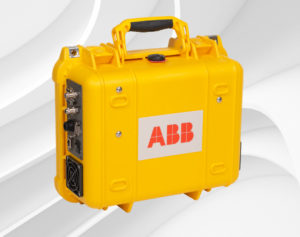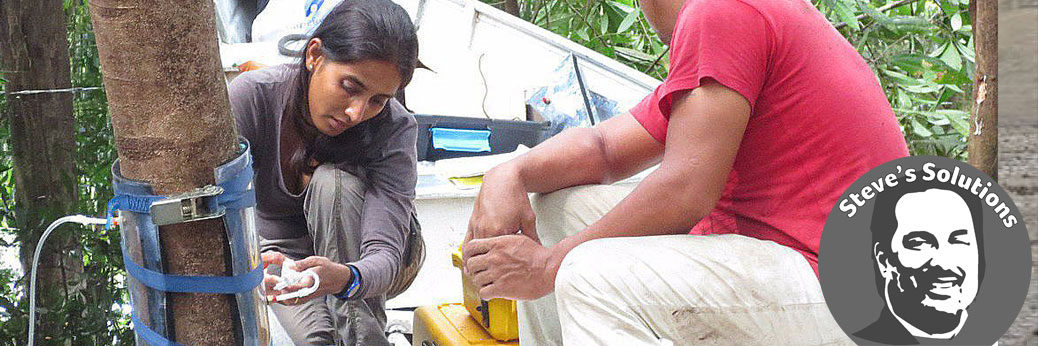Steve’s Solutions: Methane & Trees Research
Steve’s Solutions: Innovative Instrument Applications
Reprinted from ABB LGR ICOS – Newsletter
RECENT FINDINGS ON METHANE EMISSIONS BY TREES POSE NEW CHALLENGES TO THE ENVIRONMENTAL COMMUNITY
We have been following the outstanding work of Dr. Pangala since early 2018 -at that time a postdoctoral fellow at The Open University in U.K.- and her colleagues on the elucidation of methane budget of Amazon floodplain trees. In 2014, they setup a 2-month expedition in Amazonia during which they recorded in-situ the methane emissions from about 2400 trees in several floodplains. This thorough survey allowed to demonstrate that an approximate 20 tons of methane were released yearly through the Amazon trees -essentially those in the extensively flooded forests. The origin of this important contribution to global carbon budget had not been identified until then, because all previous Amazon measurements had been made “on the ground”, notwithstanding the pumping effect of the trees for methane produced through microbial activity in wetlands, combined with the significant exchange surface with atmosphere of their trunks, stems and leaves. The data supporting that groundbreaking discovery were collected using custom-made soft chambers strapped to trees and connected to an LGR Ultraportable Greenhouse Gas Analyzer U-GGA-915.
[WD_Button id=2788] [WD_Button id=2792]
During that survey, the U-GGA-915 proved particularly accurate and reliable, even for use in harsh conditions. It also demonstrated its ease of use for in-situ measurements in the rain forest, and field serviceability. The work of Dr. Pangala and co-workers was published in the prestigious Nature magazine (https://www.nature.com/articles/nature24639).
The publication drew attention of the environmental scientific community worldwide on that new and unexpected greenhouse gas source, and today the consequences of that finding are intensively discussed globally as illustrated in the recent posts on Wired and National Geographic websites:
- https://www.nationalgeographic.com/environment/2019/03/trees-release-methanewhat-itmeans-climate-change/
- https://www.wired.com/story/trees-emit-a-surprisingly-large-amount-of-methane/

There are several trillions trees on earth and methane is the second greenhouse gas -after carbon dioxide- with largest contribution to global warming; its estimated lifetime when accumulated in the atmosphere is about 10 years. Even though in most cases the carbon storage capacity of trees outweighs their methane emissions, this important effect must now be taken into account when calculating carbon budgets at local or global scales. The precise carbon budget calculations are complicated because overall, trees can both emit and absorb methane, and the net balance may depend on the season, the age of the tree and even the specific part of the tree considered – many trees tend to emit methane close to their base and absorb it higher up the trunk.
Overall, while the beneficial role of trees and forests for the climate and environment should not be questioned, scientists agree that in the future it will be important to estimate more precisely the carbon footprint of the different varieties of trees, and make a careful selection of the trees that shall be retained as part of sustainable programs for planet reforesting.
For additional information about our instruments, technologies or consulting services, please contact us.
For More information
Steve’s Solutions
To view gas analyzers in action, visit the Steve’s Solutions articles featuring these instruments.
 | Measuring Urban Impact of Acidic Emissions from a Fertilizer Residuals Landfill |
 | Recent findings on methane emissions by trees pose new challenges to the environmental community. |
For More information
ABB Measurement & Analytics Website
Los Gatos Research Website

Contact Us Online Form
Phone: 916-897-2441
Email: info@Barnett-Technical.com

